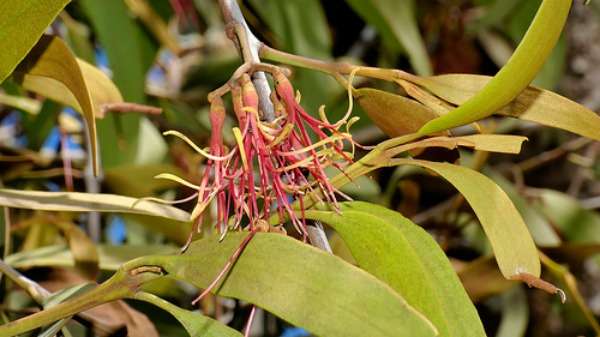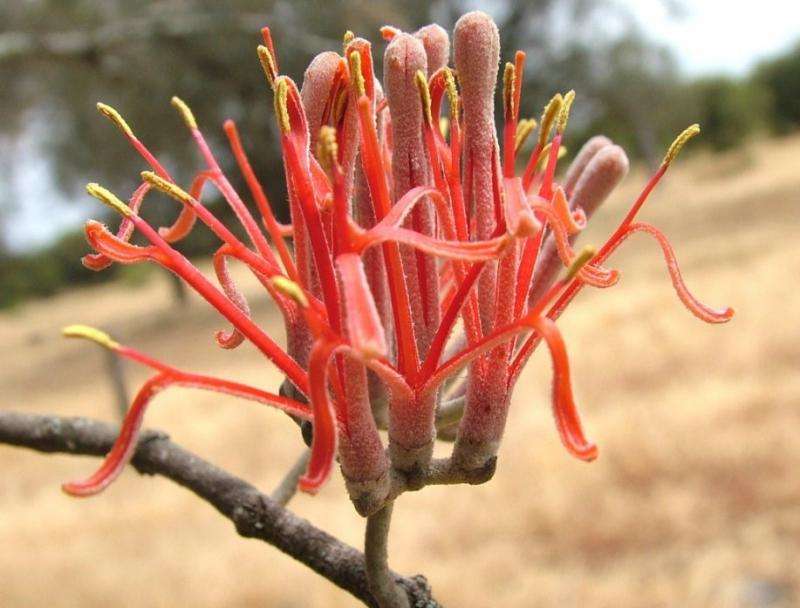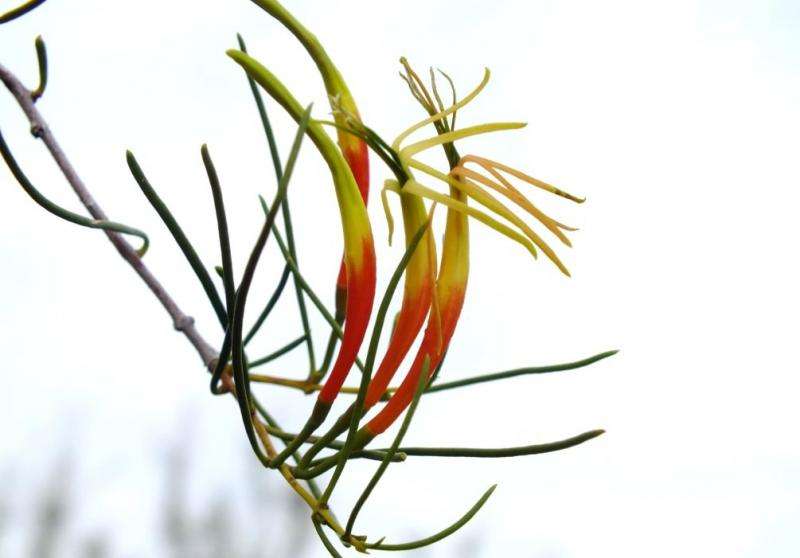Fire threatens Christmas kisses

Fire really is the Christmas grinch for WA mistletoe, with researchers discovering flames are the ultimate kiss of death for the festive plant.
The 30-year study, which involved sampling dozens of mistletoe species across the entire southern half of the state, found only one species can re-sprout after a fire, while all of the others rely on seeds coming in from elsewhere to regrow after a blaze.
With the Department of Fire and Emergency Services classifying most of WA "bushfire prone" and scientists forecasting longer and hotter summers in a warming climate, it might not be such a merry Christmas this year for the species.
Large, uncontrolled wildfires have already wiped out mistletoe species in some remote areas, while in some rural and urban parts the plant is fast becoming a pest, WA Herbarium ecologist Dr Antony Start says.
"One of the main findings [of the study] was that fire is the biggest threat to mistletoe," Dr Start says.
"Mistletoe species have become extinct across vast areas or arid parts of southern WA."
However, in Perth backyards and along some road reserves in the Wheatbelt—where fire no longer poses a threat—Dr Start says mistletoe is spreading.
"In some of those places, mistletoes are now being seen as potential pests," he says.
"But they are disappearing from vast parts of our deserts like the Great Victoria Desert, the Nullarbor and the Goldfields."

The problem is modern fire regimes have disrupted nature's balance, Dr Start says.
Now, massive firestorms are fed by a build-up of fuel loads and sweep uncontrolledly across vast tracts of countryside.
While mistletoe is most famous as a decoration for attracting a Christmas kiss, the plant is a parasite, attaching to and penetrating the branches of shrubs and trees, sucking water and nutrients from host plants.

Dr Start collected mistletoes across 1.4 million km2 and documented their distribution, growing habits and response to fire.
He found fewer mistletoe species along the coast compared to drier inland areas and diversity was sparser in the south-west compared to north-west and desert regions of southern WA.
The demise of mistletoe can spell doom for native species, such as the mistletoebird (Dicaeum hirundinaceum), some curculionid beetles and several butterflies that depend on it as food.
Provided by Science Network WA
This article first appeared on ScienceNetwork Western Australia a science news website based at Scitech.

















